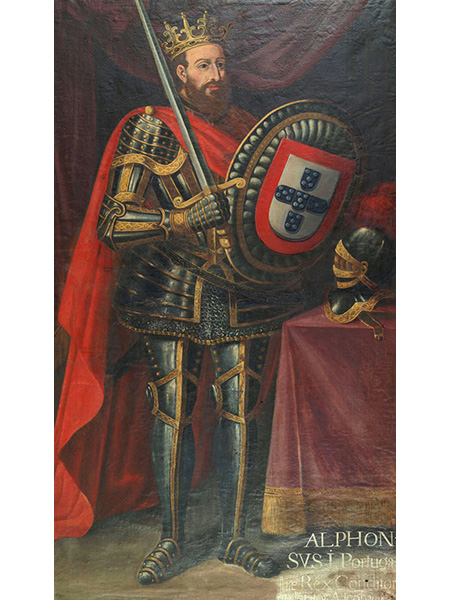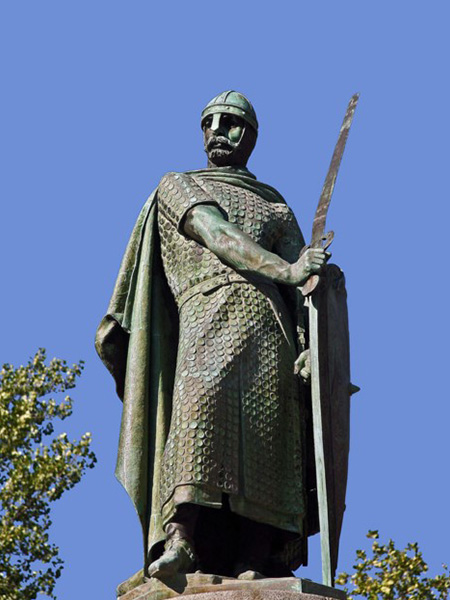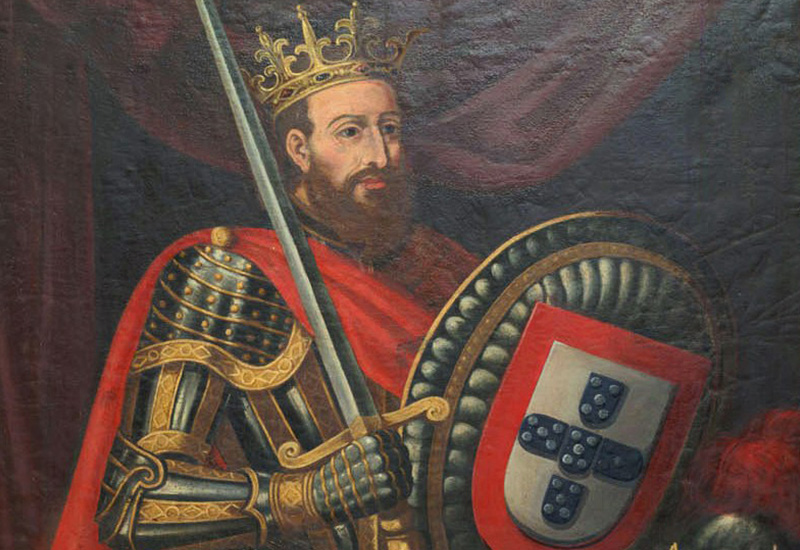There are many remarkable people in the history of Portugal, but Afonso Henriques, aka Afonso I of Portugal – The Conqueror, was the one who started it all over nine hundred years ago in the early 12th century.
WORDS Luis de Teves Costa
The Iberian Peninsula was, back then, a volatile and extremely disputed region. The north housed the Hispanic kingdoms of Aragon, Leon, Castile and Navarre. The south was Arab territory and home to the Islamic kingdoms of Al-Gharb Al Andalus (names that were eventually given to the Portuguese region of Algarve and the Spanish region of Andalusia).
For most of the time, the northern Christian kingdoms were either fighting themselves, often involving family quarrels, or joining forces in an attempt to expel the Moors from lost southern territories. The Arabs invaded the Iberian Peninsula in 711 AD, and it did not take them long to conquer most of its territory. The Iberian Islamic kingdoms would live here for the next 800 years, leaving us a very rich cultural inheritance.
Born with a silver spoon in his mouth, Afonso Henriques was the son of Count Henrique (House of Burgundy) and Teresa (House of Leon). The exact date of his birth is not clear and ill-documented. Perhaps the high infant mortality rate in those days meant that births were not such an important occasion to register. However, historians estimate his date of birth somewhere between 1106 AD and 1111 AD near Guimarães – a city that, to this day, proudly calls itself ‘The cradle of Portugal’.
His parents were gifted the county of Portucale by the king of Leon as a wedding present and reward for the military efforts against the Saracens. This county comprehends the northern part of Portugal as we know it today, from Coimbra upwards. Once widowed, Afonso’s mother tried to incorporate the county of Portucale back as the territory of Leon. However, Afonso had different ideas and wanted to protect his legacy and remain lord of his lands.


Afonso Henriques was educated in the art of warfare at a very young age. He was made a knight in 1122 at the age of 11 (or 16, depending on when he was born!). In 1128, he was already in charge of defending the county of Portucale when he led his troops against his own mother’s army in the Battle of São Mamede, Guimarães. Afonso won this important battle and titled himself Prince of Portugal.
In 1135, Afonso Henriques started his big military incursions against the Moors. His campaigns were extremely successful and resulted in the conquering of Leiria, Santarém, Lisbon and Sintra. His incredible journey south would eventually take Afonso and his men to the battle of Ourique in 1139. Again victorious, he proclaimed himself King of Portugal for the first time. This act alone, although bold, did not make him a true king. The title had to be recognised by the Pope.
The Zamora treaty was another critical step towards independence. It was signed in 1143 by Afonso and his cousin Alphonse VII, King of Leon and Castile. The treaty recognised Portugal as an independent country and Afonso as its king. Still, he waited for official recognition from Rome.
Amongst all the conflicts, he still had time for some romance! In 1146, Afonso married Mafalda from the house of Savoy. They had seven children: four died young, two daughters lived to marry into European royal houses and his one surviving son – Sancho I – would eventually take his father’s place.
The papal approval took nearly forty years but was finally conceded by Pope Alexander III. The 1179 Manifestis Probatum was the papal decree that officially recognised King Afonso as the first sovereign ruler of Portugal and entitled his sons to bear the same title. This ruling would also mean the beginning of Portugal’s first dynasty, the so-called Afonsina but better known as the House of Burgundy.
Afonso I of Portugal would live his last days in Coimbra. When he died in 1185, the first King of Portugal had reigned for 42 years, the second longest reign in Portugal’s history. His resting place is the Church of the Holy Cross (Santa Cruz). The church was built with the king’s approval during his lifetime. Today an active church, it is also open to visitors who have the chance to see the ornamental tomb of the first King of Portugal.
If you are interested in Portuguese history, you can find more information about King Afonso I and the Seven Wonders of Portugal in a beautifully produced and illustrated 68-page brochure. It sells to the public for 5€ and all proceeds from the sales will go to the Tomorrow Algarve Charity Trust (TACT). Please email your order to Ray Gillman at vigillman@outlook.com, stating the address and your name and he will reply with details for the bank transfer and post the books to you.
Did you know …
The Arabic word for “The West” is Algharb? Sound familiar?













